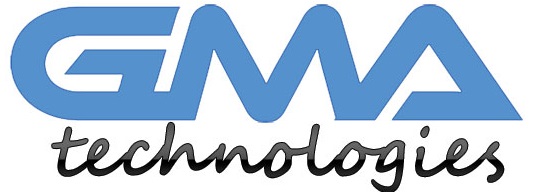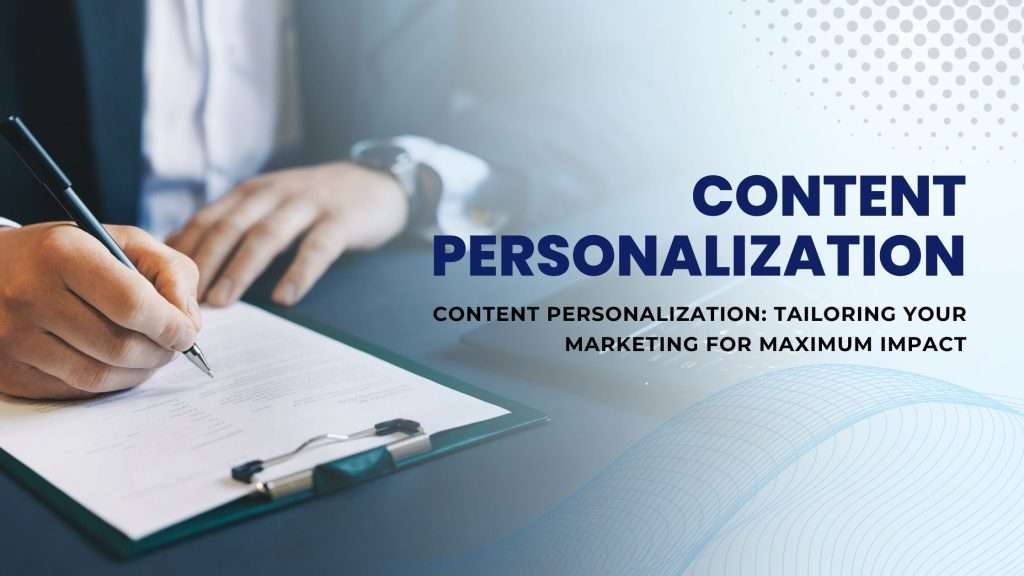Welcome to the era of personalized marketing! In a world flooded with information, standing out from the crowd is no longer just an option – it’s a necessity. That’s where content personalization comes in. By tailoring your marketing efforts to resonate with each individual customer, you have the power to not only capture their attention but also forge meaningful connections that drive maximum impact.
Join us as we delve into the art and science of content personalization, uncovering ingenious strategies, mind-boggling statistics, and real-life success stories that will inspire you to take your marketing game to unprecedented heights. Get ready for a thrilling journey filled with insights and actionable tips – because when it comes to engaging your audience like never before, customization is key!
Introduction to Content Personalization
Content personalization is a marketing strategy that involves tailoring the content and messaging of your campaigns to meet the unique needs and interests of your target audience. This approach recognizes that consumers are bombarded with an overwhelming amount of information every day, and in order to stand out, businesses must deliver personalized and relevant content.
The goal of content personalization is to create a more individualized experience for each consumer, leading to increased engagement, conversion rates, and customer loyalty. It goes beyond simply addressing someone by their first name in an email or using basic demographic data. Instead, it dives deeper into understanding the preferences, behaviors, and pain points of your audience in order to deliver highly targeted and effective marketing messages.
Understanding the Importance of Personalization in Marketing
Personalization has become a buzzword in the world of marketing, but what exactly does it mean and why is it so important? In simple terms, personalization in marketing refers to the practice of tailoring your content and messaging to individual consumers based on their specific needs, interests, behaviors, and preferences. This can be done through various tactics such as using personalized data, creating targeted campaigns, and delivering customized experiences.
The digital age has transformed the way businesses interact with their customers. With an abundance of information available at our fingertips, consumers have become more informed and empowered than ever before. As a result, they expect more from brands – not just in terms of products or services but also in terms of personalized experiences that cater to their unique needs and desires.
How Personalization Can Benefit Your Business
Personalization has become a buzzword in the world of marketing, but what does it really mean and how can it benefit your business? In simple terms, personalization refers to tailoring your marketing efforts to meet the specific needs and preferences of each individual customer. This approach goes beyond traditional mass messaging tactics and instead focuses on creating a unique and personalized experience for each customer.
So why exactly is personalization important for businesses? Let’s take a closer look at some key benefits that this strategy can bring:
1. Increased Customer Engagement: Personalized content resonates more with customers as it caters to their specific interests and pain points. When customers feel like a brand understands them, they are more likely to engage with its content, leading to increased website traffic, social media interactions, and ultimately, conversions.
2. Improved Customer Experience: By delivering personalized content at every touchpoint of the customer journey, businesses can create a seamless and enjoyable experience for their customers. This not only helps in building loyalty but also encourages repeat purchases and positive word-of-mouth recommendations.
3. Higher Conversion Rates: According to research by Epsilon, 80% of consumers are more likely to make a purchase when brands offer personalized experiences. By understanding the unique needs of each customer through data analysis, businesses can deliver targeted messages that lead to higher conversion rates.
4. Better ROI: Personalization allows businesses to target their resources towards customers who are most likely to convert or have high lifetime value (LTV). This maximizes the return on investment (ROI) for marketing efforts, ensuring that businesses get the most out of their budget.
Overall, personalization has become a crucial component of modern marketing strategies. By understanding and catering to the unique needs of each individual customer, businesses can increase engagement, improve customer experience, drive conversions, and ultimately achieve long-term success.

Types of Personalization
Personalization has become a buzzword in the marketing world, and for good reason. With an increasing amount of competition and noise in the digital landscape, personalized content allows brands to cut through the clutter and connect with their audience on a deeper level. But what exactly does personalization mean? And how can it be implemented effectively?
There are several types of personalization that can be used to tailor your marketing efforts: demographic, behavioral, and contextual. Each type offers its own benefits and can be used in different ways to create a more personalized experience for your audience.
1. Demographic Personalization:
As the name suggests, demographic personalization involves tailoring content based on specific characteristics of your target audience such as age, gender, location, occupation, income level etc. This type of personalization is based on the understanding that different demographics have different needs and preferences when it comes to consuming content. For example, a clothing brand targeting young adults would use vibrant colors and trendy language to appeal to this demographic while a brand targeting older professionals might opt for more sophisticated messaging.
Demographic personalization can also extend beyond basic demographics to include psychographics – which take into account attitudes, interests and lifestyles of your audience. This information can be gathered through surveys or by analyzing data from social media platforms.
2. Behavioral Personalization:
Behavioral personalization takes into account how individuals interact with your brand’s website or app – what pages they visit, what products they view or purchase etc. This type of personalization is based on the understanding that past behavior is a strong indicator of future behavior. By tracking and analyzing user behavior, brands can tailor content to match their interests and preferences.
A common example of behavioral personalization is the “recommended for you” section on e-commerce websites. This feature suggests products based on the user’s browsing or purchase history, increasing the likelihood of conversion.
Implementing Personalization in Your Marketing Strategy
Personalization has become a crucial aspect of marketing in today’s digital landscape. With the abundance of data available and advanced technologies, it is now possible to deliver targeted and relevant content to your audience. Implementing personalization in your marketing strategy can greatly enhance the impact of your campaigns and drive better results for your business.
Here are some key steps to help you effectively implement personalization in your marketing strategy:
1. Collect Relevant Data: The first step towards implementing personalization is collecting relevant data about your target audience. This includes their demographics, behavior patterns, interests, preferences, and past interactions with your brand. You can gather this information through various channels such as website analytics, social media insights, email engagement metrics, etc.
2. Segment Your Audience: Once you have collected the data, the next step is to segment your audience based on similar characteristics or behaviors. This will help you create more targeted and personalized messaging for each group. For example, you can segment based on age, location, interests or purchase history.
Tools and Platforms for Content Personalization
In today’s digital age, consumers are bombarded with an overwhelming amount of content every single day. With so much information available at their fingertips, it can be challenging for brands to cut through the noise and capture their audience’s attention. This is where content personalization comes in – tailoring your marketing efforts to individual customers based on their interests, behaviors, and preferences.
One of the key elements of successful content personalization is using the right tools and platforms. These technologies enable brands to collect data about their audiences and use it to create targeted and relevant content that resonates with each individual consumer. In this section, we will discuss some of the top tools and platforms for content personalization that can help you take your marketing strategy to the next level.
1. Customer Relationship Management (CRM) Software
A CRM software is a central database that stores customer information such as contact details, purchase history, and interactions with your brand. By integrating this data with your marketing efforts, you can personalize your messaging based on each customer’s past behavior and preferences. For example, if a customer has previously purchased a specific product from your website, you can use CRM data to recommend other related products they might be interested in.
2. Data Management Platforms (DMPs)
DMPs are powerful tools that allow marketers to collect and manage large volumes of audience data from various sources such as website traffic, social media interactions, and email campaigns. With this data at hand, DMPs offer advanced segmentation capabilities that enable brands to create highly targeted and personalized content for different groups of customers.
3. Content Management Systems (CMS)
A CMS is a software application that allows businesses to create, manage, and publish digital content on their website. Many CMS platforms offer personalization features that allow you to display different content to different users based on their behavior or profile data. For example, you can use a CMS to show personalized product recommendations or customized landing pages based on a user’s browsing history.
4. Marketing Automation Platforms
Marketing automation platforms help businesses automate marketing tasks such as email campaigns, social media posts, and website updates. These tools also offer personalization capabilities by allowing marketers to segment their audience and send targeted messages based on specific triggers or actions. For instance, you can set up automated emails that are triggered when a customer abandons their shopping cart or makes a purchase.
5. Artificial Intelligence (AI) Tools
Artificial intelligence has become increasingly popular in the realm of content personalization. AI-powered tools can analyze large volumes of data in real-time and make predictions about consumer behavior and preferences. This information can then be used to personalize content delivery through various channels such as websites, email campaigns, and chatbots.
Measuring the Success of Your Personalized Marketing Campaigns
Measuring the success of your personalized marketing campaigns is crucial for understanding their effectiveness and determining the best strategies to continue driving positive results. Without proper measurement, it can be difficult to know if your efforts are truly resonating with your target audience and generating a return on investment.
There are several key metrics that you should pay attention to when evaluating the success of your personalized marketing campaigns. These include:
1. Click-through Rate (CTR)
The click-through rate measures the percentage of people who clicked on a specific link or call-to-action in your personalized content. This metric is important because it shows how well your messaging is attracting attention and driving engagement.
2. Conversion Rate
The conversion rate measures the percentage of visitors who completed a desired action, such as making a purchase or filling out a form, after engaging with your personalized content. This metric can help you determine if your campaign is successfully converting leads into customers.
3. Engagement Rate
Engagement rate refers to the level of interaction and involvement from your target audience with your personalized content. This includes actions like sharing, commenting, or liking posts and emails related to your campaign. A high engagement rate indicates that your content is resonating with users and creating a buzz around your brand.
4. Return on Investment (ROI)
ROI calculates the amount of revenue generated from each dollar spent on your personalized marketing campaign. It takes into account factors such as customer acquisition costs, average order value, and lifetime customer value to provide an overall picture of how successful the campaign was in terms of generating revenue.
Overall, the success of your personalized marketing campaigns should be measured not only by these specific metrics, but also by how well they align with your overall business goals and objectives. By regularly tracking and analyzing these metrics, you can make informed decisions about how to optimize and improve future campaigns for even greater success.
Case Studies: Successful Examples of Content Personalization
Case studies are powerful tools that showcase the success of a particular strategy or approach. In the context of content personalization, case studies can provide valuable insights into how businesses have effectively tailored their marketing efforts to target specific audiences and achieve maximum impact.
In this section, we will explore some successful examples of content personalization from various industries to gain a better understanding of how it can be implemented and its potential benefits.
1. Netflix: Personalized Recommendations
As one of the largest streaming services in the world, Netflix has mastered the art of content personalization. Their recommendation engine uses a combination of algorithms and user data to create personalized suggestions for each individual viewer.
For instance, when you log into your Netflix account, you are presented with a curated list of movies and TV shows based on your viewing history, search queries, and ratings. This feature not only makes it easier for users to find new content but also keeps them engaged by offering relevant recommendations.
The success of this personalized approach is evident in Netflix’s subscriber base growth, which reached over 203 million global subscribers in 2020.
2. Amazon: Personalized Product Recommendations
Amazon is another company that has leveraged content personalization to improve its customer experience. The e-commerce giant uses data from previous purchases, browsing history, and search queries to offer personalized product recommendations to its customers.
These recommendations appear on the homepage as well as throughout the website while browsing for products. This not only helps customers find what they are looking for quickly but also increases the chances of cross-selling and upselling.
According to a study by McKinsey, personalized recommendations on Amazon account for nearly 35% of its total sales.
Challenges and Best Practices for Implementing Personalization
Personalization has become a crucial aspect in today’s marketing landscape. With the rise of technology and data-driven strategies, consumers now expect a personalized experience from brands. However, implementing personalization can be challenging for many businesses. In this section, we will discuss the challenges that companies may face when implementing personalization and the best practices to overcome them.
1. Data Management Challenges
The foundation of effective personalization lies in having accurate and comprehensive customer data. This can be a challenge for businesses that have multiple sources of data or lack proper data management systems. In addition, ensuring the privacy and security of customer data is also a major concern.
Best Practice: Invest in a reliable Customer Relationship Management (CRM) system to manage all customer data in one place. This will allow you to track customer interactions, preferences, and behavior across multiple touchpoints. It is essential to prioritize data security measures to build trust with customers and comply with regulations such as GDPR.
2. Lack of Resources
Implementing personalization requires significant resources, including time, money, and skilled personnel. Many small businesses may not have the budget or expertise to invest in advanced personalization tools or hire dedicated teams for its implementation.
Best Practice: Start with simple personalization tactics such as addressing customers by their names in emails or tailoring website content based on their past interactions. As you see positive results and gain more resources, you can gradually invest in more advanced tools and strategies.
3 . Technology Integration
Personalization involves the use of various technologies such as data analytics, automation tools, and content management systems. Integrating these technologies with one another can be challenging, especially for businesses that have a complex technology infrastructure.
Best Practice: Prioritize compatibility and integration when investing in different personalization tools. Look for solutions that are designed to work seamlessly with each other or consider partnering with a technology provider that offers an integrated suite of personalization tools.
Conclusion:
In today’s digital age, consumers are bombarded with a constant stream of advertisements and marketing messages. With so much competition for their attention, it has become crucial for businesses to find ways to stand out and engage with their target audience. This is where content personalization comes in.
Through the use of data and technology, businesses can now tailor their marketing strategies to meet the specific needs and interests of individual customers. This not only allows for more effective communication but also helps build stronger relationships with customers.
One of the key benefits of content personalization is its ability to increase customer engagement. By delivering personalized content that speaks directly to the individual’s interests, needs, and pain points, businesses can capture their attention and keep them interested in what they have to offer.

